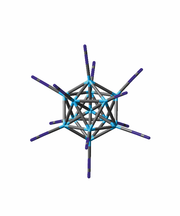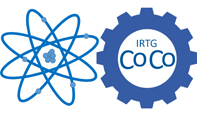21.06.2016 - Gereon Niedner-Schatteburg - Clusters as Surfaces: Kinetics and Spectroscopy
| When |
Jun 21, 2016
from 04:00 PM to 05:00 PM |
|---|---|
| Where | HS II, Physik Hochhaus, Hermann-Herder-Str. 3 |
| Add event to calendar |
|
Clusters – in particular those of transition metals – may act like surfaces of limited size, this analogy being recognized long time ago [1,2]. We have studied the C-H bond activation of various organic molecules by naked transition metal clusters before [3], and it became mandatory to switch to simpler systems. By virtue of our tandem cryo ion trap instrument we study the adsorption kinetics of clusters under single collision conditions as well as the Infrared Multiple Photon Dissociation (IR-MPD) by application of optical parametric oscillator/amplifier (OPO/OPA) photon sources, one and two colour investigations of metal organic complexes by such technique being published [4].

Our ongoing studies of N2 and H2 cryo adsorption on Fe, Co, and Ni clusters and alike [5] revealed clearly discernible mono layer like adsorbate shells. Beyond such mere kinetics – though interesting in themselves – we recorded IR-MPD spectra of dinitrogen stretching vibrations within such [Mn(N2)m]+ cluster surface – adsorbate layer complexes by variation of their stoichiometry, n and of m alike, and in conjunction with electronic structure modelling (by DFT), and with synchrotron X-ray based studies of spin and orbital contributions to the total magnetic moments of the isolated clusters [6].
This presentation shall elucidate the current state of cluster adsorbate studies under cryo conditions and in isolation. It aims to put into perspective the findings from adsorption kinetics, IR spectroscopy, DFT modelling and magnetic spectroscopy. It concludes with an outlook onto the road ahead.
This research originates from a long standing support by the DFG through the transregional collaborative research center SFB/TRR 88 3MET.de
[1] E. L. Muetterties, T. N. Rhodin, E. Band, C. F. Brucker, W. R. Pretzer, Chem. Rev., 1979, 79, 91-137.
[2] G. Ertl, Angew. Chem. Int. Ed., 2008, 47, 3524 – 3535.
[3] B. Pfeffer, S. Jaberg, and G. Niedner-Schatteburg, J. Chem. Phys. 2009, 131, 194305; L. Barzen, M. Tombers, C. Merkert, J. Hewer, and GNS, Int. J. Mass Spectrom. 2012, 330–332, 271–276; M. Tombers, L. Barzen, and GNS, J. Phys. Chem. A 2013, 117, 1197-1203.
[4] Y. Nosenko, F. Menges, C. Riehn, GNS, Phys. Chem. Chem. Phys. 2013, 15, 8171; J. Lang, M. Gaffga, F. Menges, and GNS, Phys. Chem.Chem. Phys. 2014, 16, 17417 – 17421.
[5] S. Dillinger, J. Mohrbach, J. Hewer, M. Gaffga, and GNS, Phys. Chem. Chem. Phys. 2015, 17, 10358.
[6] S. Peredkov, M. Neeb, W. Eberhardt, J. Meyer, M. Tombers, H. Kampschulte, GNS, Phys. Rev. Lett. 2011, 107, 233401; J. Meyer, M. Tombers, C. van Wüllen, GNS, S. Peredkov, W. Eberhardt, M. Neeb, S. Palutke, M. Martins, and W. Wurth, J. Chem. Phys. 2015, 143, 104302.
See poster ...


